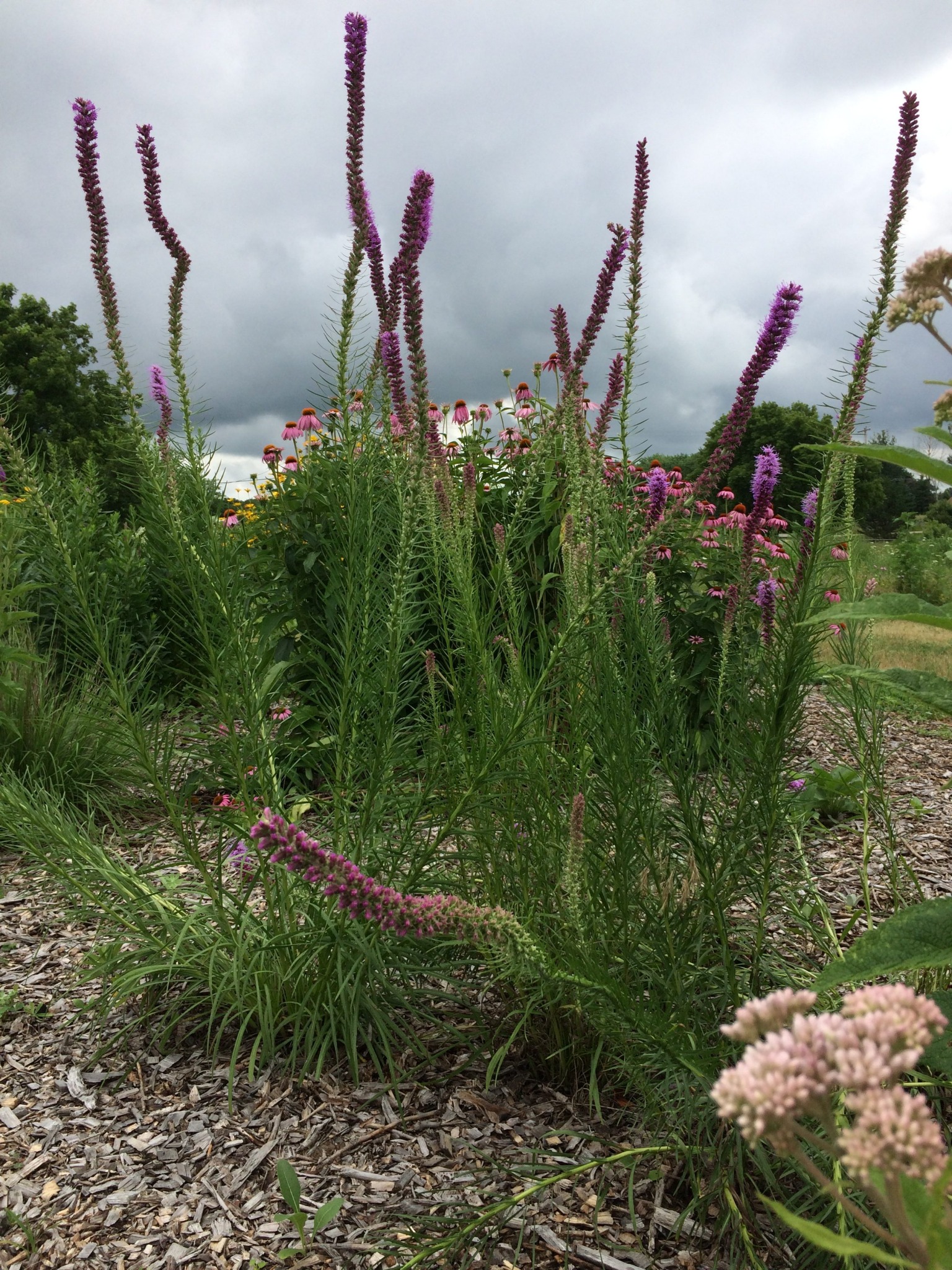Description
OUT OF STOCK
Tall, erect, purplish- pink spike in August-September
Tall, erect, purplish- pink spike in August-September
OUT OF STOCK
Tall, erect, purplish- pink spike in August-September
OUT OF STOCK
Lemon yellow silky petals bloom late spring to early fall on this tough-as-nails native
Size: 9-18” x 12-15”
Care: sun in well-drained soil, drought tolerant
Native: Great Plains: Central Canada to TX, Michigan to Montana, WI native
1st described in 1818 by Thomas Nuttall, English planthunter who collected hundreds of “new” plants in North America. Caly is Greek for calyx; lophos for “the back of the neck; crest of a hill or helmet” serrulatus means “minutely serrate” or “saw-toothed” describing the leaf margins.
Umbels of arching stems with nodding bells of lilac shading to pink or occasionally white. May to June.
We are very sorry, but due to state agricultural restrictions, we are not permitted to ship Allium bulbs to Idaho, or to the following five counties in the State of Washington: Adams, Benton, Franklin, Grant and Klickitat.
Size: 12”-18”x 3-6”
Care: sun to part shade in moist well-drained soil
Native: Canada to Mexico
Wildlife Value: nectar source for Hairstreak butterfly, Attracts hummingbirds. Alliums resist critters including deer, rabbits, squirrels, mice, and moles and voles. They cannot stand the onion-like smell of Alliums protecting near-by plants too.
Cernuum is Latin meaning “nodding.” Many groups of 1st Americans ate the bulbs raw, roasted or dried for winter storage or as flavoring for soups and gravies. Cherokee used this plant medicinally to cure colds, hives, colic, “gravel & dropsy,” liver ailments, sore throats, “phthisic,” and feet in “nervous fever.” Those in the Isleta Pueblo were not quite as creative as the Cherokee and used this only for sore throats and infections. Meriwether Lewis collected this in Montana and wrote, “I met with great quantities of a small onion about the size of a musquit ball … They were crisp, white and well-flavoured. I gathered about a half a bushel of them before the crew arrivd.” Chicago is believed to be named for the Algonquin word for this plant chigagou.
Wispy, feather-like seedheads atop blue-grey foliage that turns plum-orange-red in fall
Size: 18" x 12"
Care: sun in well-drained soil.
Native: all No. America, Wisconsin native.
Wildlife Value: leaves are food for Skipper butterfly caterpillars and seeds food for songbirds
Comanche used it to remedy syphilitic sores. Lakota made soft, wispy seedheads into liners for moccasins. Collected by French plant hunter André Michaux (1746-1802) in America’s prairies c. 1790
In May and June yellow petticoats peek out from under eye-popping red skirts flaring at the ends as these flowers dangle from tall stems.
Size: 24-36”x 12”
Care: part shade in moist well-drained soil - moist in spring & dry in summer
Native: Eastern Canada to Florida, west to New Mexico, Wisconsin native.
Wildlife Value: Provides rich, early spring nectar for bumblebees, bees, butterflies, and hummingbirds. Buntings and finches eat seeds. Sole food source for Columbine duskywing caterpillar.
Awards: England’s Royal Horticultural Society Award of Merit.
Seeds are fragrant when crushed, used by Omaha, Ponca and Pawnee as perfume. Pawnee used the plant as a love charm by rubbing pulverized seeds in palm of hand and endeavoring to shake hand of desired person. Crushed seeds also used to cure fever and headaches. Cherokee made a tea for heart trouble. The Iroquois used the plant to cure poisoning and to detect people who were bewitched. Grown by Tradescant the Elder in England in 1632. He may have received it from France. Cultivated by Washington & Jefferson. Grown at America’s 1st botanic garden, Elgin Botanic Garden 1811.

